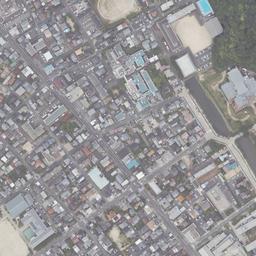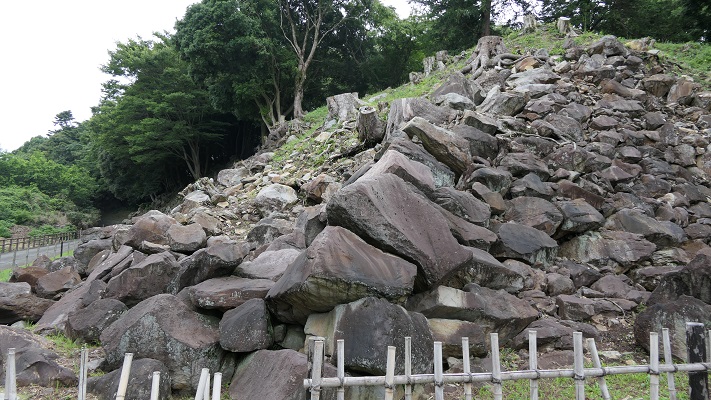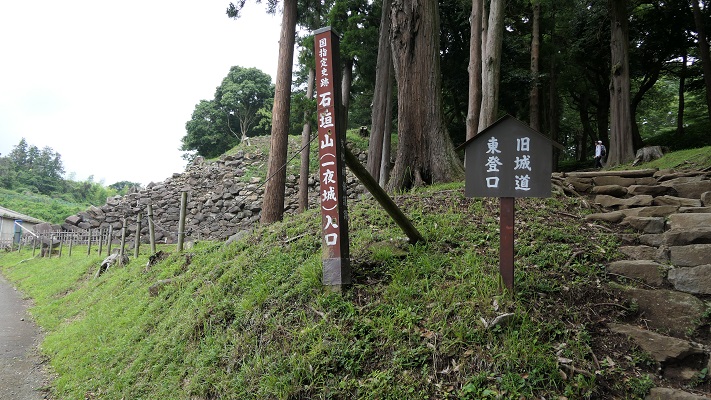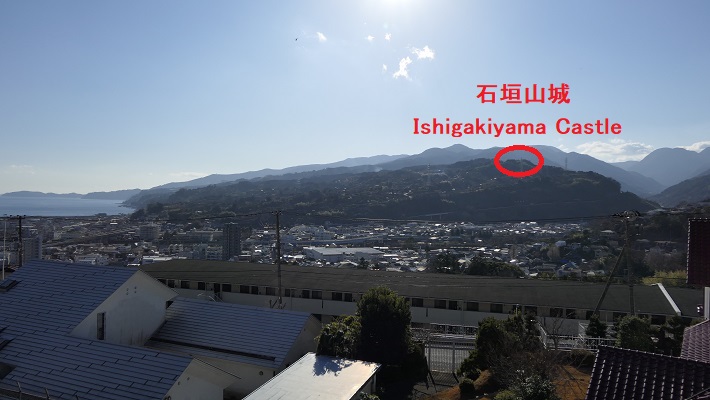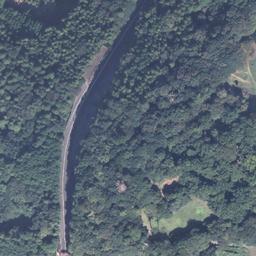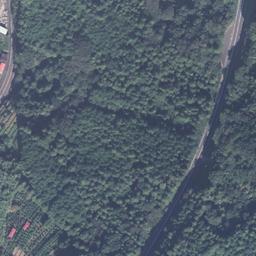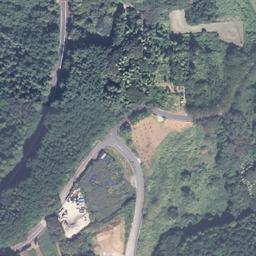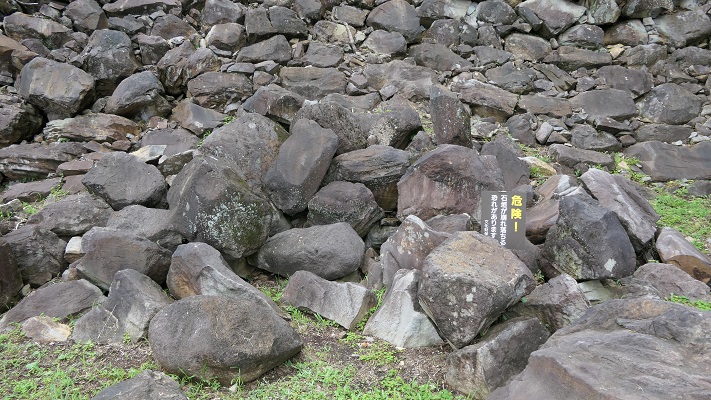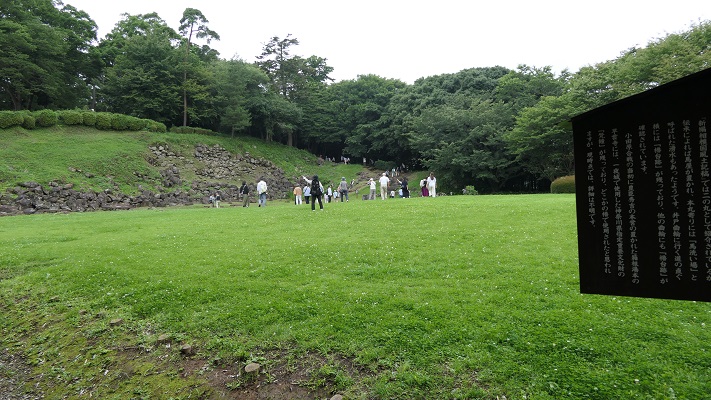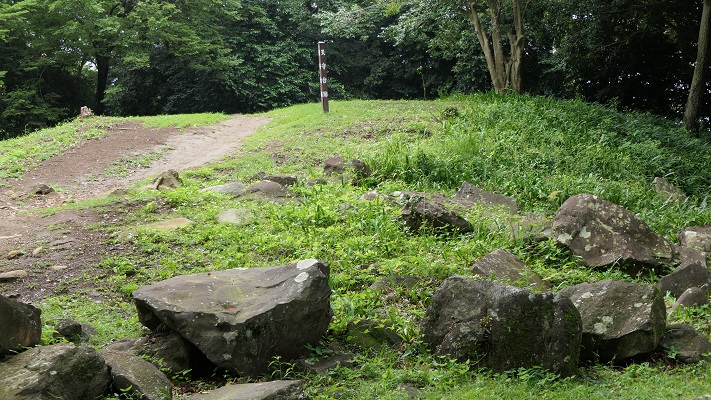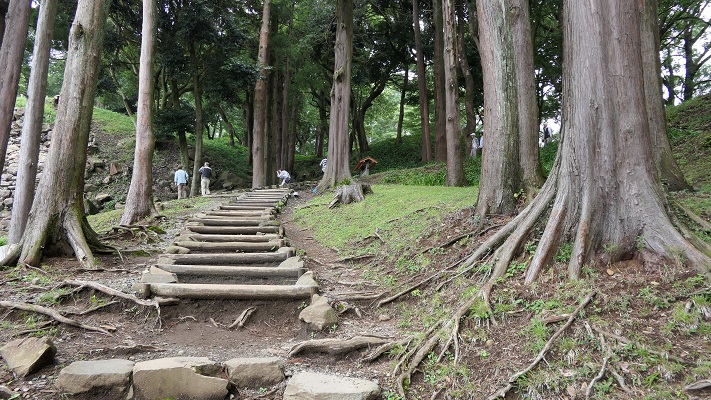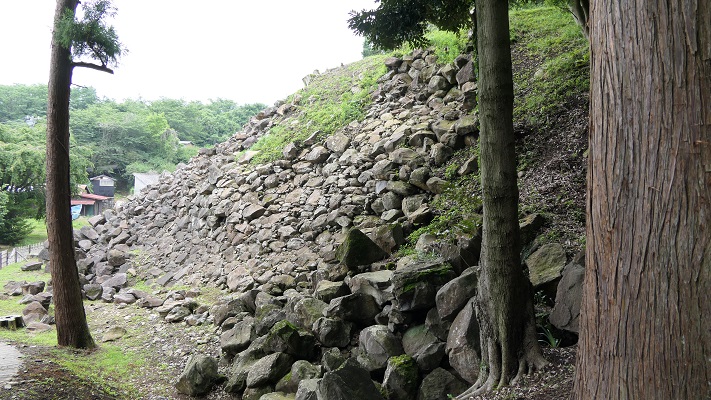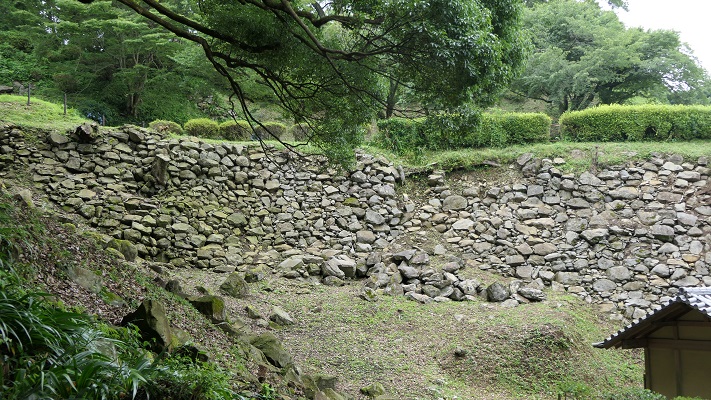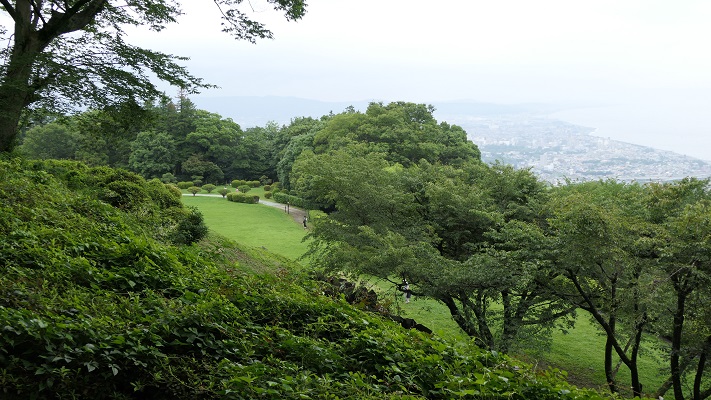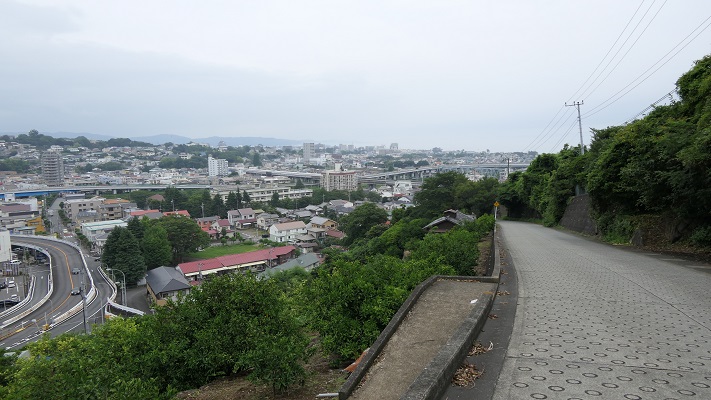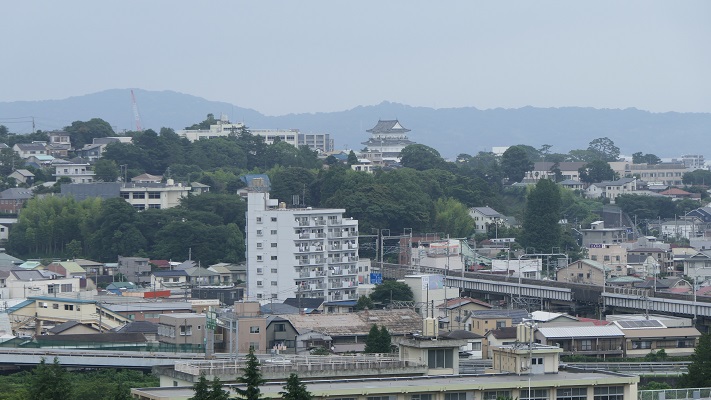立地と歴史~Location and History
鳥取城の戦い~The battle of Tottori Castle
鳥取市は中国地方にある鳥取県の県都です。鳥取市は、鳥取砂丘、梨の産地、そして鳥取城があることで知られています。鳥取城は最初は戦国時代に山名氏によって、「久松山」と呼ばれる263mの高さがある山の上に築かれました。その当時一般的であった典型的な山城でした。戦国時代の後半、中国地方のほとんどは毛利氏に属していましたが、織田氏がこの地方の侵略を狙い、後に天下人豊臣秀吉となる部下の羽柴秀吉を派遣しました。毛利もまた、織田の攻撃から城を守るため、一族の吉川経家を送ります。
Tottori City is the prefectural capital of Tottori pref. in the Chugoku Region. The city is known for Sand Dunes, pears and the Tottori Castle. The castle was first built on a 263m high mountain called “Kyusho-zan” by the Yamana clan in the “Sengoku” or Warring States Period. It was a typical mountain castle which was popular at that time. In the late Sengoku Period, most of Chugoku Region belonged to the Mori clan, but the Oda clan aimed to invade the region, and sent his man, Hideyoshi Hashiba, the later ruler as Hideyoshi Toyotomi. Mori also sent their relative Tsuneie Kikkawa to protect the castle from Oda’s attack.
1581年7月、有名な鳥取城の戦いが始まります。秀吉は城周辺の地域の食料を全て買い上げたと言われています。経家は鳥取城への補給線を確保するため、いくつもの支城を築きました。秀吉は素早くその支城を確保し、水軍により日本海からの海上輸送路も封鎖しました。その結果、城は孤立したのです。
The famous battle of Tottori Castle happened in July, 1581. It is said Hideyoshi bought up food in the area around the castle. Tsuneie built several branch fortresses to keep supply chains for Tottori Castle. Hideyoshi quickly gained those fortresses and made his navy block the sea lane at the Japan Sea. As a result, the castle was isolated.

秀吉は、鳥取城の背後わずか1.4kmのところ、「太閤ヶ平」と呼ばれる標高251mの山に大規模な本陣を建設しました。彼はまた、城を幾重もの砦、土塁、空堀で取り囲みました。秀吉はたとえ女子どもであっても城から脱出することを決して許しませんでした。食い扶持を減らさせないためです。包囲戦は3ヶ月続き、経家はついに城と彼の命を差し出す代わりに城兵の命を助けることを条件に降伏しました。
Hideyoshi constructed a large stronghold on a 251 m high mountain called “Taiko-ga-naru”, in the back of Tottori Castle, only 1.4 km away from it. He also surrounded the castle by making fortresses, earthen walls, and dry moats multiply. He never allowed anyone including women and children to escape from the castle, because they would consume the food. The siege lasted for three months. Finally Tsuneie surrendered offering the castle and his life in exchange for the lives of the other defenders.
江戸時代は池田氏が統治~The Ikeda clan governs it in the Edo Period
江戸時代になって、池田氏が城とその周辺の地域を支配しました。彼らは広大な領地を持っており、統治のため多くの施設を必要としました。池田氏は、山の麓に多くの建物と石垣を築きましたが、城の拡張には不足を感じていたようで、一時は新しい本拠地として米子城などに移ることも検討しました。結局移転は中止となります。
In the Edo Period, the Ikeda clan governed the castle and the area around it. They had a large territory, so they needed many facilities to govern. The clan built many buildings and a lot of stone walls at the foot of the mountain. However, they felt insufficient in extent of the castle, so they once considered another castle like Yonago Castle as their new home base. Eventually, the plan was canceled.
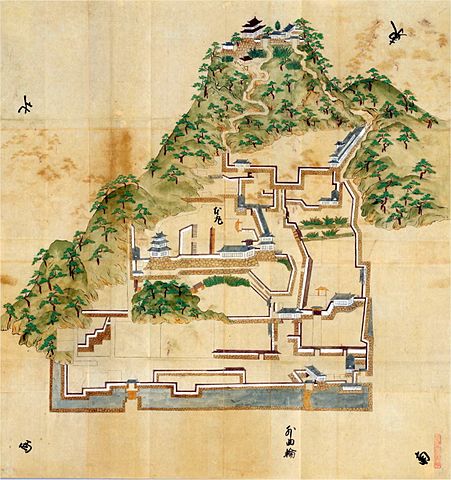
鳥取城は、何度も地震や火事に見舞われますが、江戸時代の末まで拡張と修繕が続けられます。「巻石垣」と呼ばれる丸い形をしていて石垣を支える役目の珍しい石垣があります。城のためにこのような石垣が使われた唯一の例です。
Tottori Castle was kept with improvements and repairs until the end of the Edo Period, though it suffered earthquakes and fires several times. There are rare stone walls called “Maki-ishigaki” which are round shaped to support other stone walls. It is the only case to use such stone walls for a castle.
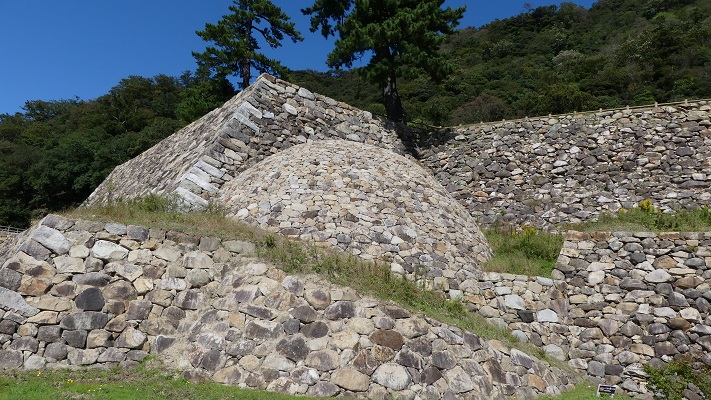
特徴~Features
城周辺の航空写真~The aerial photo of around the castle江戸時代の城「山下ノ丸」~The castle in the Edo Period “Sange-no-maru”
現在、鳥取城跡は久松公園として残っています。ここを訪れる人は最初は通常三の丸前の擬宝珠橋を歩いて渡っていきます。ここは城の大手筋に当たり、2018年に復元されました。復元方法は、基本は伝統的なものですが、元々あった遺跡を保護する最新の手法を取り入れています。今、城門を復元する工事が進められています。二つの門が2023年までに復元される予定です。
Now, the ruins of Tottori Castle remain as Kyusho Park. Visitors first usually walk across the Giboshi style bridge (its poles have ornamental tops) in front of the Sannomaru enclosure. It was on the formal route to the castle and restored in 2018. The way it was restored was basically traditional, but used the present techniques to preserve the original ruins. The construction for restoring the castle gates is continuing today. Two gates will be completed by 2023.

明治時代に建てられた仁風閣を右手に見ながら遺跡を歩いていくと、二の丸の方に登っていけます。
If you go around the ruins seeing Jinpu-kaku, a building built in the Meiji Period on the right, you can go up to the Ninomaru enclosure.
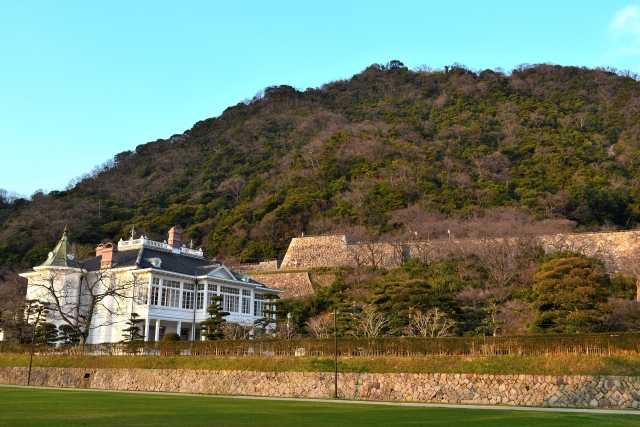
その入口の門は「西坂下御門」と呼ばれ、現時点のこの城では唯一の復元建物です。
Its entrance gate called “Nishi-Sakashita-Gomon” is the only restored building at this point.

多くの石垣が残っていますが、1943年の鳥取地震による崩壊の後、最近修復されたものです。この曲輪には、江戸時代後期にこの城の主要な建物であった三階櫓がありました。
A lot of stone walls remain, but they were repaired again recently after collapsing due to the 1943 Tottori Earthquake. There was the Three-story Turret, main building of the castle in the late Edo Period in the enclosure.


天球丸は、二の丸の隣の一段高いところにあります。その経歴は二の丸と同様ですが、巻石垣がその一部分を支えています。これらの曲輪はまとめて「山下ノ丸」と呼ばれ、山の裾野にあり、元来は江戸時代に築かれました。
The Tenkyu-maru enclosure is next to and higher than Ninomaru. The history of it is similar to Ninomaru, and the round stone walls partly support it. Those enclosures together called “Sange-no-maru” or the Enclosures under the Mountain were originally developed in the Edo Period.
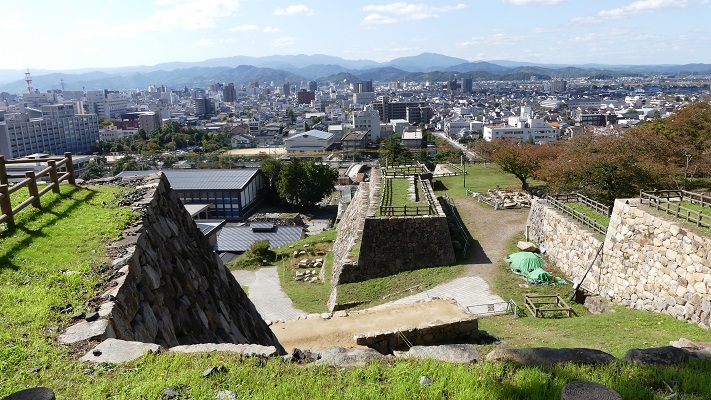
戦国時代の城「山上ノ丸」~The castle in the Sengoku Period “Sanjo-no-maru”
それから、戦国時代の城の方に登っていくことができます。天球丸の脇にある中坂口から進みます。
Then, one can climb up to the castle of the Sengoku Period. You can go the Nakasaka route beside Tenkyu-maru.
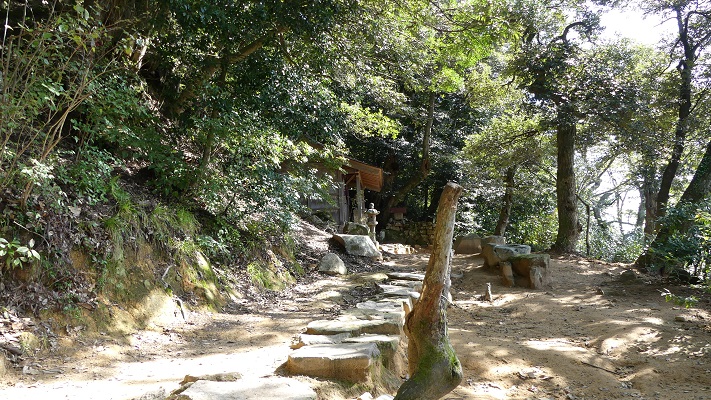
ハイキングのような感じで30分程登っていくと、頂上に着きます。昼間であれば、家族連れやペットも一緒の地元の人たちで賑わっています。
It takes around 30 minutes to reach the top just like a hiking. Local people including families and pets also enjoy it in the daytime.
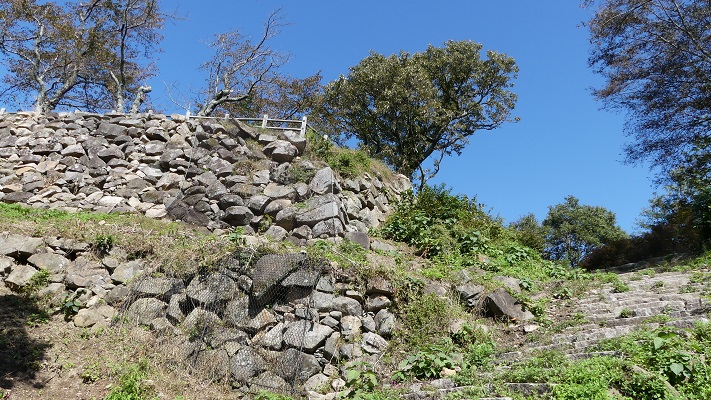
ここには、戦国時代末期に築かれた「天守」があったのですが、残念ながら1692年の落雷により焼けてしまいました。この頂上部分は「山上ノ丸」と呼ばれています。
There was the Main Tower or “Tenshu” that was built in the end of Sengoku on the top, but it was unfortunately burned down by a lightning in 1692. The top area is called “Sanjo-no-maru” or the Enclosures above the Mountain.
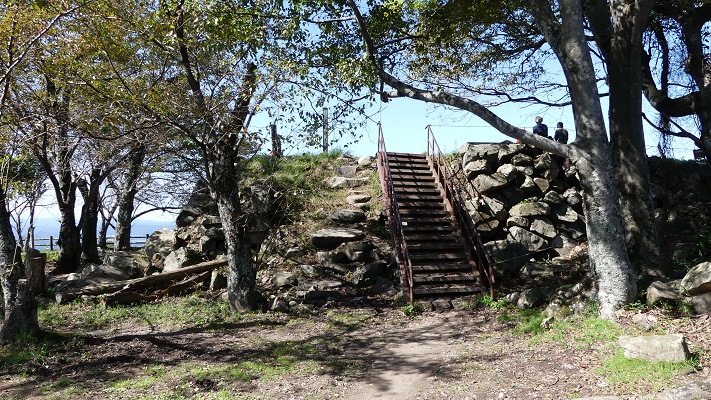
山上からは、市街地、日本海、鳥取砂丘と素晴らしい景色を楽しめます。
From the top, you can get great views of the city area, Japan sea and Sand Dunes!

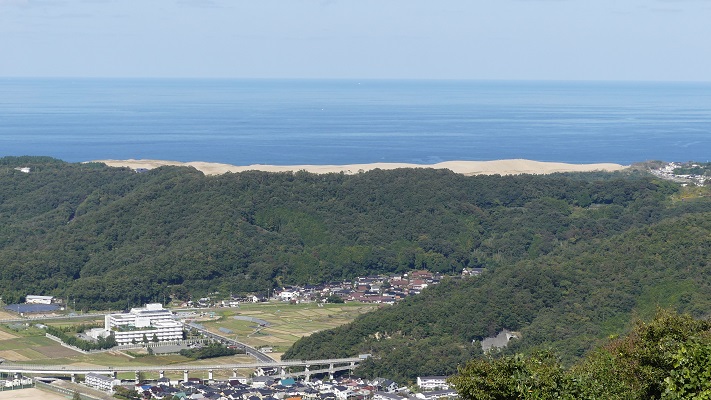
後ろの方を振り返ってみると、秀吉の本陣跡も、間近にほとんど同じ高さに見ることができます。秀吉と経家は、3ヶ月の長期籠城戦の間、お互いを注視しつつ戦っていたのです。何と苛酷だったことでしょう。
If you look around the back, you can also see the ruins of Hideyoshi’s stronghold in close at almost the same level. That meant Hideyoshi and Tsuneie were watching each other in the siege for the long three months. How severe it was!
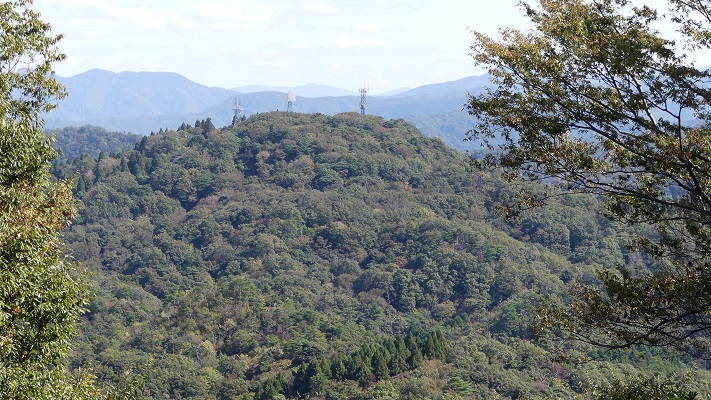
その後~Later History
明治維新後、鳥取城は廃城となり、建物は撤去されました。そして、以前の藩主だった池田氏が1890年から1943年の間城跡を所有していました。池田氏は1907年に洋風の迎賓館として仁風閣を建てたのです。今は博物館として残り、その建物自体が重要文化財に指定されています。その後、1943年からは鳥取市の所有となり、1957年には国の史跡に指定されました。市は2036年までに、二の丸の三階櫓を復元することを計画しています。
After the Meiji Restoration, Tottori Castle was abolished and its buildings were demolished. The former lord Ikeda clan owned the ruins between 1890 and 1943. The clan built Jinpu-kaku, a western style guest house for VIP in 1907, which remains as a museum, designated itself as an Important Cultural Property. After that, the ruins have belonged to Tottori City since 1943, designated as a National Historic Site in 1957. The city is planning to restore the Three-story Turret in Ninomaru by 2036.
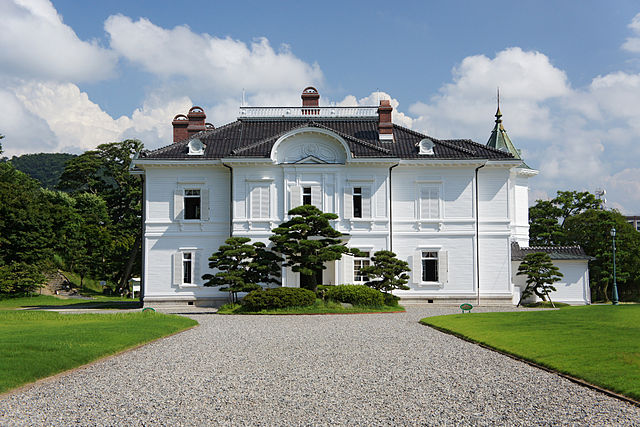
私の感想~My Impression
池田氏が鳥取城に残り、他に行かなかったのは、やはりこの城の歴史と有名さからだと思います。次にここを訪れるときには、是非秀吉の本陣があった太閤ヶ平に行き、鳥取の歴史をより深く学びたいと思います。
I think the reason why the Ikeda clan decided to stay and not to leave Tottri Castle was that it had a long history and name value. I would like to visit Taiko-ga-naru where Hideyoshi’s stronghold was to learn more about the history of Tottori the next time I go there.

ここに行くには~How to get There
ここに行くには、電車と「バスかタクシーか徒歩」にすることをお勧めします。城跡の周りにはあまり駐車場がないからです。
鳥取駅から:グリーンバスに乗り、仁風閣県立博物館バス停で降りてください。歩くと約30分かかります。
I recommend you using train and “bus or taxi or walk” to get there. Because there are few space to park around the ruins.
From JR Tottri station: Take the green bus, and take off at the Jinpukaku-kenritsuhakubutsukan bus stop. Or it takes about 30 minutes on foot.

リンク、参考情報~Links and References
・国指定史跡「史跡鳥取城跡附太閤ヶ平」にようこそ!(Tottori City Official Website)
・「歴史群像161号、戦国の城/因幡鳥取城攻囲戦」学研(Japanese Magazine)
・「よみがえる日本の城6」学研(Japanese Book)






































